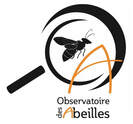Revue d'Hyménoptérologie
Journal of Hymenopterology
ISSN 2727-3806
ARTICLE |
Les périodes d’essaimage des fourmis parasites du sous-genre Chthonolasius observées dans la région Hauts-de-France (Hymenoptera : Formicidae : Formicinae)
|
Laurent Colindre
|
Citation
Colindre, L. (2021). Les périodes d’essaimage des fourmis parasites du sous-genre Chthonolasius observées dans la région Hauts-de-France (Hymenoptera : Formicidae : Formicinae). Osmia, 9: 7–14. https://doi.org/10.47446/OSMIA9.2
Received 22 February 2021 - Accepted 25 April 2021 - Published (online) 26 April 2021
Indexation • Archivage - Archiving
Résumé
Les périodes d’essaimage des fourmis parasites du sous-genre Chthonolasius sont ici étudiées dans le Nord de la France. Ce travail, mené entre 2014 et 2020, permet de mieux comprendre leur stratégie de parasitage des espèces hôtes. Le rôle du piégeage dans le cadre de l’étude de ce groupe d’insectes est souligné, notamment celui du piège lumineux qui semble être la technique la plus efficace pour détecter les individus appartenant à ce sous-genre. Les données recueillies permettent également de s’interroger sur la valeur patrimoniale de ces espèces.
Mots-clefs
Lasius, pièges à insectes, biologie, Picardie
Title (translation)
Swarming periods of parasitic ants from the subgenus Chthonolasius observed in the Hauts-de-France region (Hymenoptera: Formicidae: Formicinae)
Abstract
Swarming periods of parasitic ants from the subgenus Chthonolasius are studied in Northern France. This work, carried out between 2014 and 2020, improves our understanding of their strategy for parasitising host species. The role of insect traps for the study of this group of insects is underlined, especially the light traps which seems to be the most effective technique for detecting individuals belonging to this subgenus. The data collected also makes possible to question the patrimonial value of these species.
Keywords
Lasius, insects traps, biology, Picardy
Références - References
Colindre, L. (2021). Les périodes d’essaimage des fourmis parasites du sous-genre Chthonolasius observées dans la région Hauts-de-France (Hymenoptera : Formicidae : Formicinae). Osmia, 9: 7–14. https://doi.org/10.47446/OSMIA9.2
Received 22 February 2021 - Accepted 25 April 2021 - Published (online) 26 April 2021
Indexation • Archivage - Archiving
- DOI: https://doi.org/10.47446/OSMIA9.2
- Zoobank (ICZN): http://zoobank.org/13CBE3E4-DC6F-4228-B018-0EDCBCFA4E42
- HAL (CNRS-INRAE): https://hal.archives-ouvertes.fr/hal-03207515
- Zenodo (CERN): https://zenodo.org/record/4718407
Résumé
Les périodes d’essaimage des fourmis parasites du sous-genre Chthonolasius sont ici étudiées dans le Nord de la France. Ce travail, mené entre 2014 et 2020, permet de mieux comprendre leur stratégie de parasitage des espèces hôtes. Le rôle du piégeage dans le cadre de l’étude de ce groupe d’insectes est souligné, notamment celui du piège lumineux qui semble être la technique la plus efficace pour détecter les individus appartenant à ce sous-genre. Les données recueillies permettent également de s’interroger sur la valeur patrimoniale de ces espèces.
Mots-clefs
Lasius, pièges à insectes, biologie, Picardie
Title (translation)
Swarming periods of parasitic ants from the subgenus Chthonolasius observed in the Hauts-de-France region (Hymenoptera: Formicidae: Formicinae)
Abstract
Swarming periods of parasitic ants from the subgenus Chthonolasius are studied in Northern France. This work, carried out between 2014 and 2020, improves our understanding of their strategy for parasitising host species. The role of insect traps for the study of this group of insects is underlined, especially the light traps which seems to be the most effective technique for detecting individuals belonging to this subgenus. The data collected also makes possible to question the patrimonial value of these species.
Keywords
Lasius, insects traps, biology, Picardy
Références - References
- AntArea (2020). Répartition > Espèces. AntArea. Étude, identification, répartition, localisation des fourmis françaises métropolitaines. Canohès, France. http://antarea.fr/fourmi/?repartition/repertition-especes.htm [accessed 15 December 2020]
- Boer, P. (2009). Nieuws over de Nederlandse mieren (2004-2008) (Hymenoptera: Formicidae). Nederlandse Faunistische Mededelingen, 30: 39–46. https://repository.naturalis.nl/pub/420997 [accessed 15 February 2021]
- Colindre, L. (2016). Les fourmis en Picardie : bilan des découvertes et redécouvertes 2016 (Hymenoptera/Formicidae) L’Entomologiste picard, 28 : 11–12.
- Colindre, L. (2020). Découverte de Lasius citrinus Emery, 1922 dans les Hauts-de-France (Hymenoptera / Formicidae). L’Entomologiste picard, 33: 3.
- Colindre, L. (2021). Les Chthonolasius : quelques statistiques et généralités. La Lettre d’information d’AntArea, 7: 22–24. https://antarea.fr/wp/wp-content/uploads/2021/01/Lettre-dinformation-AntArea-2021.pdf [accessed 15 February 2021]
- Collingwood, C. A. (1979). Fauna Entomologica Scandinavica. 8. The Formicidae (Hymenoptera) of Fennoscandia and Denmark. Scandinavian Science Press, Klampengorg (Denmark), 174 pp. http://antbase.org/ants/publications/6175/6175.pdf [accessed 15 February 2021]
- Else, G. R., B. Bolon & G. Broad (2016). Checklist of British and Irish Hymenoptera – aculeates (Apoidea, Chrysidoidea and Vespoidea). Biodiversity Data Journal, 4: 1–188. https://doi.org/10.3897/BDJ.4.e8050
- Fox, M. G. (2020). Lasius sabularum (Bondroit, 1918). BWARS. Bees, Wasps & Ants Recording Society. UK. https://www.bwars.com/ant/formicidae/formicinae/lasius-sabularum [accessed 15 February 2021]
- Ødegaard, F., K. M. Olsen, A. Staverløkk & J. O. Gjershaug (2015). Towards a new era for the knowledge of ants (Hymenoptera, Formicidae) in Norway? Nine species new to the country. Norwegian Journal of Entomology, 62: 80–99. https://www.researchgate.net/publication/308265585_Towards_a_new_era_for_the_knowledge_of_ants_Hymenoptera_Formicidae_in_Norway_Nine_species_new_to_the_country [accessed 15 December 2021]
- Seifert, B. (1988a). A revision of the European species of the ant subgenus Chthonolasius (Insecta, Hymenoptera, Formicidae). Entomologische Abhandlungen Staatliches Museum für Tierkunde Dresden, 51: 143–180. https://doi.org/10.5281/zenodo.24609
- Seifert, B. (1998b). Rote Liste der Ameisen (Hymenoptera: Formicidae). In: M. Binot, R. Bless, P. Boye, H. Gruttke & R. Pretscher (ed.). Rote Liste gefährdeter Tiere Deutschlands. Schriftenreihe für Landschaftspfleg und Naturschutz, 55: 130–133.
- Seifert, B. (2007). Die Ameisen Mittel- und Nordeuropas. Lutra Verlags- und Vertriebsgesellschaft, Klitten (Germany), 368 pp.
- Seifert, B. (2018). The ants of Central and North Europe. Lutra, Boxberg (Germany), 408 pp.
- Vankerkhoven, F., L. Crèvecoeur, M. Jacobs, D. Muls & W. Dekoninck (2018). Is Lasius bicornis (Förster, 1850) a very rare ant species? (Hymenoptera: Formicidae). Bulletin de la Société royale belge d’Entomologie/Bulletin van de Koninklijke Belgische Vereniging voor Entomologie, 154: 37–43. https://www.researchgate.net/publication/325466809_Is_Lasius_bicornis_Forster_1850_a_very_rare_ant_species_Hymenoptera_Formicidae [accessed 15 February 2021]










